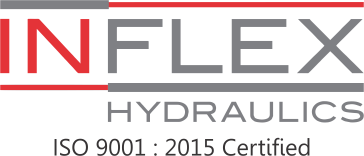In the fast-paced world of industrial operations, every second counts—and so does every connection. Whether you’re transferring oil, chemicals, or water, a secure and efficient link between your hoses and pipelines is non-negotiable. That’s where camlock couplings step in—simple yet powerful tools that offer a no-fuss, leak-proof way to connect and disconnect hoses without needing tools or clamps.
But how do you choose the right one? With so many cam lock types available, it can get confusing. In this blog, we break down everything you need to know—from what is a camlock fitting, to selecting the ideal material, type, and size for your system.
What Is a Camlock Fitting?
Before diving into selection, let’s start with the basics—what is a camlock fitting?
A camlock fitting (also known as a cam and groove coupling) is a two-piece connector that joins pipes or hoses together. It consists of:
- A male adapter (the plug)
- A female coupler with cam arms that lock into place
When the cam arms are folded down, they create a tight seal—making the connection both quick and secure. The beauty of this system is that it doesn’t require tools. That’s right—you can connect and disconnect hoses with just your hands, even in harsh environments.
Read more blogs: 5 Tips on How to Maintain and Extend the Lifespan of Your Foot Valve
Understanding Cam Lock Types
Now, let’s talk about the different cam lock types. There are several variations available, each designed for a specific kind of connection.
Common Cam Lock Types:
- Type A: Male adapter × female thread
- Type B: Female coupler × male thread
- Type C: Female coupler × hose tail
- Type D: Female coupler × female thread
- Type E: Male adapter × hose tail
- Type F: Male adapter × male thread
- DC/DP: Dust cap and dust plug for system protection
Each of these cam lock types serves a particular function based on your connection point and media flow. For example, if you’re working with threaded pipe ends, Type B or D would be appropriate. If your setup uses hose ends, Types C and E are ideal.
At Inflex Hydraulics, we offer a wide range of camlock couplings in all these types and sizes—from ½” up to 6″.
Choosing the Right Material
Selecting the correct camlock couplings isn’t just about shape—it’s also about material compatibility. Different applications require different levels of durability, corrosion resistance, and temperature tolerance.
Available Materials:
| Material | Ideal Use Case |
| Aluminum | Lightweight, general-purpose, cost-effective |
| Stainless Steel | High-pressure and corrosive environments |
| Brass | Petroleum and fuel applications |
| Polypropylene | Chemical handling and water transfer |
For instance, if you’re dealing with aggressive chemicals or food-grade materials, stainless steel or polypropylene is the best choice. Aluminum is ideal for lightweight applications, while brass excels in marine or petroleum environments.
Key Considerations for Selecting Camlock Fittings
With so many cam lock types and materials, how do you choose the right one?
Here’s a quick checklist:
- Type of Connection: Hose-to-hose, hose-to-pipe, or pipe-to-pipe?
- Material Compatibility: Will the fitting be exposed to corrosive fluids or extreme temperatures?
- Size Requirements: Measure the inner diameter of the hose or pipe correctly.
- Pressure Rating: Different camlock fittings are rated for different pressure levels.
- Seal/Gasket Type: Choose gaskets (like NBR, EPDM, or Viton) based on the fluid you’re working with.
If you’re unsure, our technical experts at Inflex Hydraulics are always ready to help you make the right call.
Where Are Camlock Couplings Used?
You’ll find camlock couplings in action across a wide range of industries, including:
- Oil & Gas: For crude oil, fuel, and lubrication lines
- Chemical Plants: For safe and secure chemical transfers
- Agriculture: For water pumps, sprayers, and irrigation lines
- Food & Beverage: For clean and sanitary fluid movement
- Construction: For dewatering, dust suppression, and fuel delivery
Their versatility and speed make them a preferred choice where time, safety, and durability matter most.
Recommended Reading: SS BALL VALVE vs. Brass Ball Valve: Which One is Best for Your Application?
The Inflex Advantage: Quality Camlock Fittings in Dubai
At Inflex Hydraulics, we know that not all camlock fittings are created equal. That’s why we ensure every coupling we supply meets global standards. Here’s what sets us apart:
- All cam lock types are available under one roof
- Wide material selection to suit your industry and application
- Quick shipping and expert support
- Customization options for size and fitting combinations
Whether you need a high-pressure stainless steel solution or a lightweight polypropylene fitting, we’ve got you covered.
Final Thoughts
Understanding the different cam lock types, materials, and applications can save you time, money, and headaches down the road. The right camlock couplings not only improve operational efficiency but also ensure system safety.
So next time you’re wondering what is a camlock fitting is or how to pick one, just remember:
- Match the type to your connection method
- Choose materials that handle your media and temperature range
- Trust reliable suppliers like Inflex Hydraulics for quality assurance



